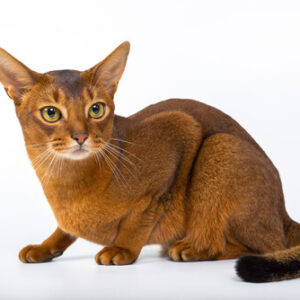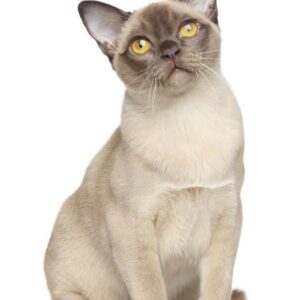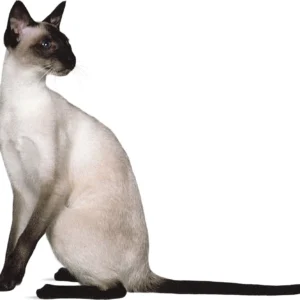Cornish Rex Cat Breed:
Active: The Cornish Rex is a highly active cat that enjoys using its strong muscles to show off by climbing and leaping. Additionally, Cornish Rex cats love to play games and interact with their companions and will follow them from room to room just to be where their companions are.
Size: The Cornish Rex is a medium-sized cat, typically weighing 6 to 10 pounds.
Characteristics: While the Cornish Rex may seem delicate in appearance, they are actually quite muscular and strong cats. They have a small, egg shaped head with large, alert ears perched on top. They have large, oval shaped eyes, echoing the shape of their heads and distinctive Roman noses. They have long legs but small, dainty paws. Additionally, they have an arch to their backs that can be seen when standing.
Temperament: Cornish Rex cats are active, lovely cats that love to interact with their companions. They will want to be where you are, at all times. They are highly intelligent, love to play and will entertain you with their hilarious antics. They love to play games which makes them wonderful pets for families with children. But, just because they are very busy and active doesn’t mean they aren’t loving. They are incredibly affectionate and loyal and will purr their way into anyone’s heart. They will happily play any game you have in mind and love to play fetch and climb to great heights.
Care: The lovely silky, curly coat of the Cornish Rex has no guard hairs and is extremely easy to care for. The signature curly coat will become damaged with brushing so the coat should be left mostly alone. Frequent nail trimming and ear cleaning will help keep your Cornish Rex looking its best and regular teeth brushing will help prevent periodontal disease.
Coat: The coat of the Cornish Rex is full of short, tight, velvety curls that feel wonderful to the touch. They have no harsh guard hairs. The coat comes in a wide variety of colors and patterns. If you are looking for a hypoallergenic cat then the Cornish Rex cat is a great candidate. They produce less of the Fel D1 protein which is the true cause of your allergic reaction. There is no cat that is 100% allergy free so increasing the frequency of grooming and bathing your furry friend will also help.
Origin: The Cornish Rex cat breed origins date back to the 1950s in Bodmin Moor, Cornwall, England. A curly-coated kitten was born to a shorthaired tortoiseshell and a white cat named Serena. The curly-coated kitten was the only one of the litter with the unique coat and additionally had a very different body type from the rest of the litter. The curly coat was a natural genetic mutation and this particular kitten, named Kallibunker, had an orange and white coat. Serena and Kallibunker’s owner, Mrs. Nina Ennismore, thought Kallibunker had a very unique appearance and consulted her veterinarian. Her veterinarian recommended that she contact a geneticist to learn more. Interestingly, Ennismore had previously exhibited rabbits and found Kallibunker’s coat to be similar to Astrex rabbit fur.
The geneticist, A.C. Jude, agreed with Ennismore’s assessment of the fur and recommended Ennismore breed Kallibunker back to Serena. The subsequent litter produced three kittens and two of them had the same curly coat as Kallibunker. Another mating produced additional curly-coated kittens and a new breed was born. The breed was given the name Cornish Rex, in reference to the breed’s country of origin as well as to the Astrex rabbit. To grow the breed, outcrossing began with domestic cats as well as Burmese and Siamese. It was determined that the curly coat gene was recessive and helped determine how to mate cats going forward and be able to continue to produce Cornish Rex cats with a curly coat.
In 1957, the first Cornish Rex (Lamorna Cove) was imported to the United States to cat fancier Frances Blancheri. The gene pool was relatively small so outcrossing continued with Siamese, Havana Browns, American Shorthairs. The Cornish Rex’s gene pool was effectively strengthened and grown and diversity, which brought additional colors and patterns, was an added benefit of outcrossing. In 1964, the CFA accepted the Cornish Rex cat breed for championship status and today is recognized by all major associations.
Be the first to review “Cornish Rex” Cancel reply
Related products
kittens
kittens
kittens
kittens
kittens
kittens
kittens
kittens






















Reviews
There are no reviews yet.